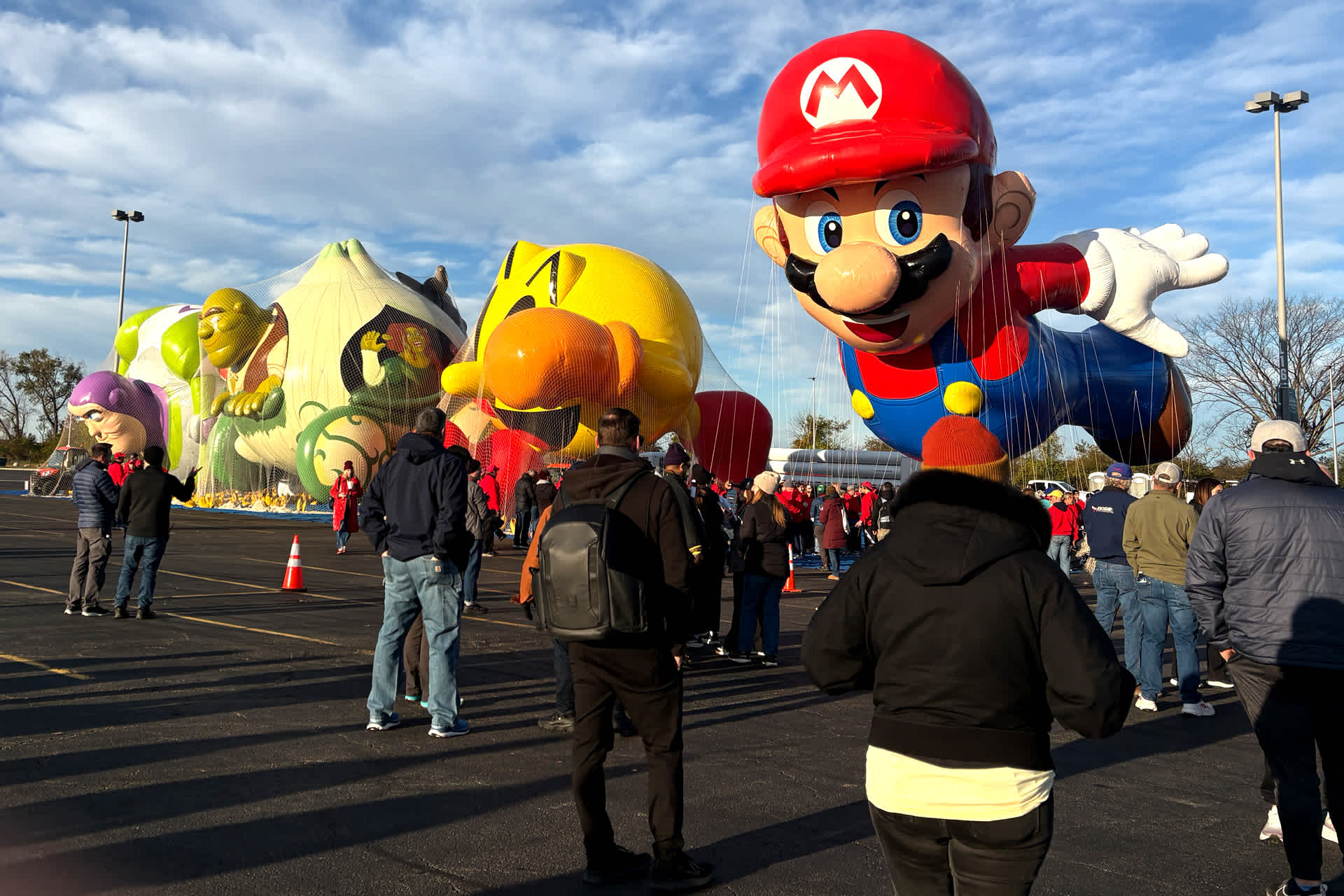Parade Pro

On November 1, TFK Kid Reporter Vicky Sun interviewed Will Coss, the executive producer of the Macy’s Thanksgiving Day Parade. Coss leads several teams in designing and producing this annual event, which attracts millions of spectators and TV viewers, and involves 5,000 volunteers, 32 giant balloons, and 27 elaborate parade floats. Read Vicky’s account below.
The Macy’s Thanksgiving Day Parade returns to New York City on November 27. This event will mark the parade’s 99th year. On November 1, I attended Macy’s BalloonFest, an annual event to showcase and safety-check the newest balloons in the parade lineup. The event took place outside MetLife Stadium, in East Rutherford, New Jersey. I was greeted by several surprisingly massive balloons: for example, the onion carriage from Shrek, which was my personal favorite. Leading the team of flight captains and balloon handlers was Will Coss. I had a chance to interview him and learn about his job and what goes into making the beloved Macy’s Thanksgiving Day Parade possible. Read part of our conversation here.
How does someone become a parade producer?
A lot of hours of hard, hard work. The path to being a parade producer can take many forms. I started in live event television. So I started my career as an intern at a media company, and volunteered many hours. I was locking tapes, I was running errands, I was on set. I was kind of there to shadow and to support production. Then I got my first job as a production assistant, and then worked my way up through the different roles in production and worked on various shows. But it has been a wonderful path, and has led me here to lead the team producing one of the most iconic parades in the country.
What are some fun or unexpected parts of the job?
Designing floats and balloons. There’s a lot of jobs in event production, but there aren’t many that allow you to create 50-foot balloons that fly 30 or 40 feet in the air. So this has to be one of the most surprising and enjoyable parts of the job. We have an entire team of concept artists and designers at Macy’s Studios. We start with a pencil sketch. Once we decide what character position and what flight position we want the balloon to be in, we take it into a 3D model. So we bring it from a sketch into a computer drawing. We 3D-model it, and then we start testing it for wind. We start to understand how it’ll react once we get it outside into different weather conditions. Then we make it.
What should future parade producers study in school?
I was a communications major with a concentration in film and video production. So I knew from a very early age that I wanted to make things and be a part of productions. Every time I walked down the street and saw a [film crew], I was intrigued, interested in what they were doing. I think the most important part is getting the experience—in a TV show, in a parade: just to start to understand how all the pieces work. That's the most important part of being a producer. You don’t have to know how to do everything, but you should understand how everything works, so you can help to ensure that it works successfully each and every year.
How early do you have to get up on the day of the parade?
I don’t sleep much between the day before the parade and the actual parade. I’m up at about 3 a.m. to get myself dressed and ready to go, and then I head up to the Upper West Side [of Manhattan, in New York City, where the team is putting the final touches on the parade. We get ourselves organized for one of the most exciting parts of the parade, which is our countdown. “Three! Two! One! Let’s have a parade!” Confetti shoots off, the crowd goes wild, and then our official line of march begins. And then we march our way from the Upper West Side down to 34th Street, and officially kick off the holiday season.

What’s the most challenging part of preparing the parade?
The parade itself. We take 30 balloons, 27 floats, 11 marching bands, multiple performance groups—over 5,000 people—marching through the streets on one of the busiest travel days in New York City. We shut down about three and a half miles of streets. So the logistics of actually preparing for that is probably one of the most challenging pieces. But the joy, the excitement, the energy, and the love that we feel from everyone who joins us—whether it be in person or on television—are what motivates us and what keeps us focused on doing the best version of the job we can do.
How do you prepare for bad weather or surprises?
We call it contingency planning. We have contingency plans for bad weather or for wind, or if someone doesn’t show up on time. We know how we’re going to adjust either our parade procession or our live television broadcast. Contingency planning is essential to any production, whether it be a parade or a TV show or something else—theater, a Broadway show. It’s important to know, “If something were to go wrong, where are we going next?” instead of trying to figure out where we’re going next when something goes wrong.
This interview has been edited for length and clarity.

